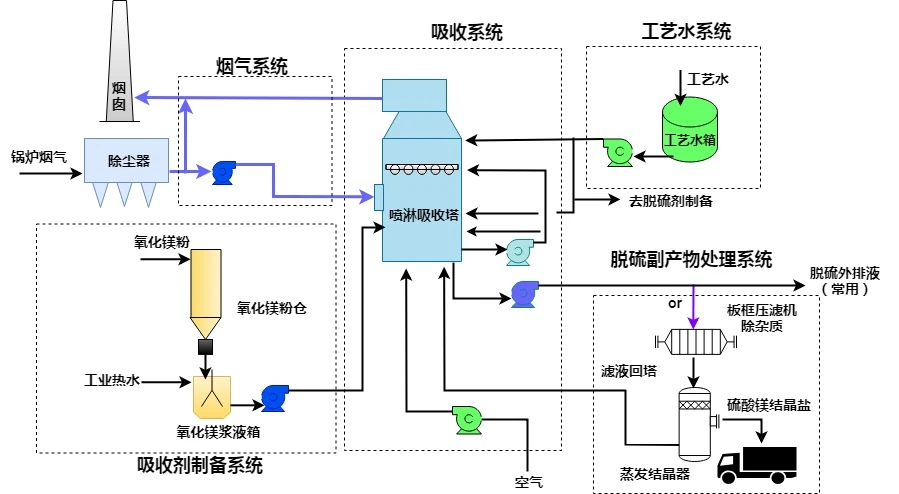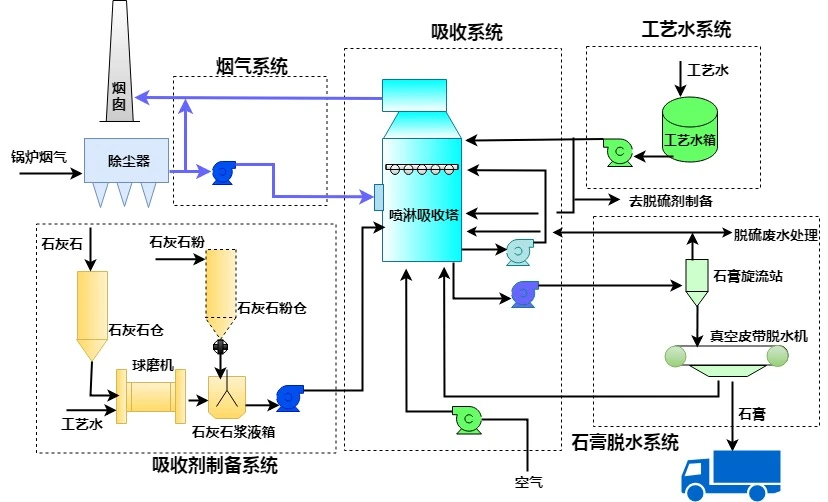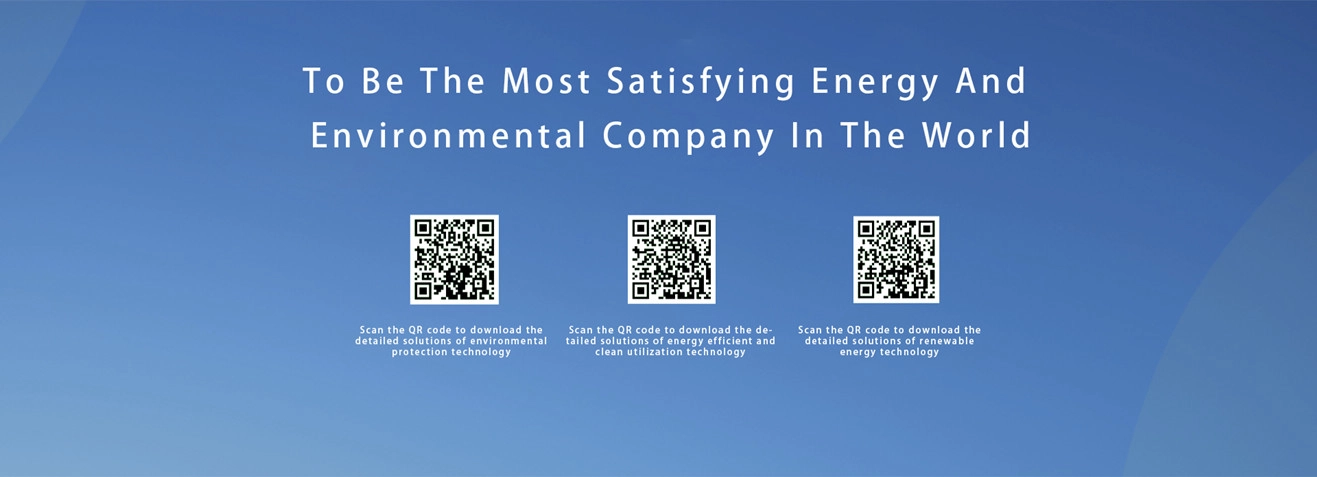Save resources, protect the environment and build Community of Shared Future for Mankind together.
Wet Efficient Desulfurization Technology
WFGD (Wet Flue Gas Desulfurization) is a process technology that removes SO2 from flue gas in a wet state by a solution or slurry containing absorbent, which is the preferred flue gas desulfurization technology at home and abroad at present. Wet flue gas desulfurization technology has the advantages of high desulfurization efficiency, high utilization rate of raw materials, fast reaction speed, easy operation and control, and by-product recovery. Relying on the Institute of Thermal Energy Engineering of Zhejiang University, Pyneo has established Zhejiang University - Pyneo Joint R&D Energy Conservation and Emission Reduction, who has an independent flue gas purification test platform, and independently developed a variety of advanced wet flue gas desulfurization technologies, including limestone-gypsum wet flue gas desulfurization process and magnesium oxide wet flue gas desulfurization process.
Main Content
The typical flow of this process is as following: the flue gas from the boiler induced draft fan is boosted by the booster fan and then enters the lower part of the absorption tower. The absorbent, i.e., limestone slurry in the absorption tower is sprayed downward from the upper part of the tower and mixed with the upward flowing flue gas in countercurrent. Sulfur dioxide (SO2) in the flue gas reacts with the absorbent slurry to generate calcium sulfite, which is oxidized into calcium sulfate dihydrate (CaSO4•2H2O), i.e., gypsum, in the slurry pool of the absorption tower. The desulfurized clean saturated flue gas is purified by demister and WESP in turn, and then discharged into the atmosphere through chimney.
The absorbent limestone slurry can be ground by wet ball mill or directly prepared by limestone powder and water. Gypsum slurry produced by desulfurization reaction is sent to hydrocyclone station, after primary dehydration of gypsum, it is sent to vacuum belt filter for further dehydration to produce gypsum.
Detailed Introduction
-

 Technical Characteristics
Technical Characteristics -

 Flow Chart
Flow Chart -

 Technical Advantages
Technical Advantages
Currently, limestone-gypsum wet flue gas desulfurization technology is the most widely used flue gas desulfurization technology in coal-fired power plants worldwide. It is the most mature, reliable in operation, efficient and stable technology. It has high adaptability to changes of coal type and sulfur content, and it is large in output of a single tower. The useful gypsum can be by-produced.

▲氧化镁法脱硫工艺流程图

▲石灰石-石膏法脱硫工艺流程图
The booster device independently developed by Pyneo is arranged under the spray layer, which is completely superior to the desulfurization efficiency of the first spray layer, reducing the matching of the spray layer and the circulating pump, saving energy and reducing consumption;
A gas distribution ring is designed below the spray layer to ensure the full contact between gas and liquid in the spray coverage rate, reduce the slurry erosion on the inner wall of the absorption tower and avoid the phenomenon of flue gas climbing the wall;
The coverage rate of spraying layer is over 300%, and the nozzle adopts sinking design to avoid the scour of girders;
The desulfurization efficiency can reach over 99.9%; The process is designed to avoid scaling and blockage, with less operation and maintenance;
High utilization rate of desulfurizer and low calcium-sulfur ratio; Desulfurization by-products can be comprehensively utilized;
It has strong adaptability to coal types and can handle various sulfur-containing coal types.





 To be the most satisfactory energy and environment company in the world
To be the most satisfactory energy and environment company in the world






